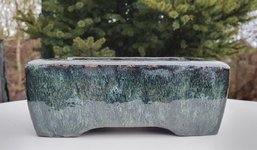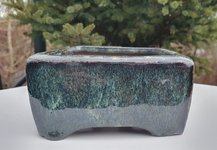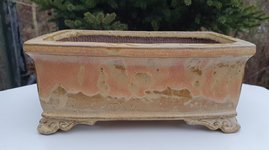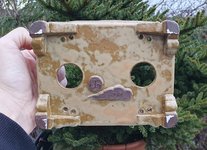I keep looking, but nothing definitive. The best book I have is Herbert Sanders World of Japanese Ceramics, you can pick it up secondhand pretty cheap. It's a fascinating read, there are some interesting glaze notes from Kenkichi Tomimoto about how some materials were sourced, and some recipes from Masatarō Onishi, which you need to reformulate for the materials you have. Glazy or Insight software can help with this. Onishi has his own books in Japanese, but I can't read Japanese!
Other than that, Michael Ryan Bells website japanesebonsaipots.net is invaluable, and I've built up a small library of Japanese bonsai pot books, these are absolute gold reference books:
Rie Aketo runs the shop and has been very helpful, he sourced me a secondhand copy of the Bonki Encyclopaedia of Pots as well. The books above have a lot of the same pictures as the Bonki ones, just smaller format. I use google translate on my phone to glean pidgeon bits of info from them.
Ok, I'm blathering on a bit now, and will surely run out of any pretentiousness soon, however:
Aesthetics are important. The more time I think about Japanese aesthetics, the more I understand the pottery:
https://plato.stanford.edu/entries/japanese-aesthetics/
I will also say that the different pottery regions in Japanese ceramics have their own traditions and recipes, and potters seem to dwell in that, with the finest work coming from mastery and repetition of those traditions. Japanese bonsai potters are steeped in those traditions, but have stretched them out in new ways, with a broader set of materials too. The really good work, to my eye is either at, or was in it's time at that evolving point of tradition, aesthetics, and novelty.




















